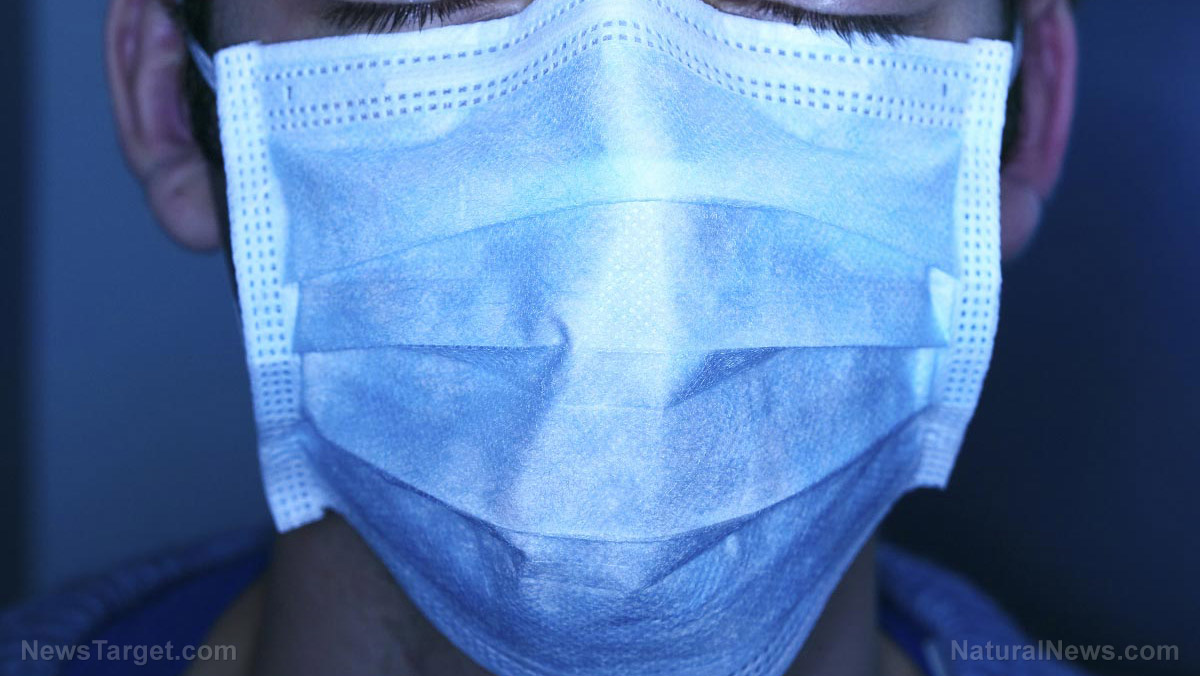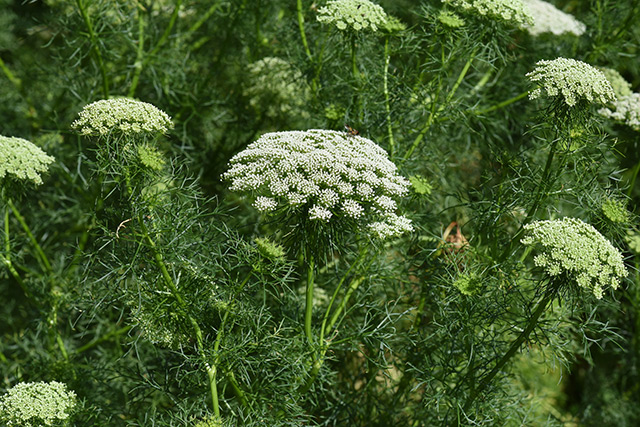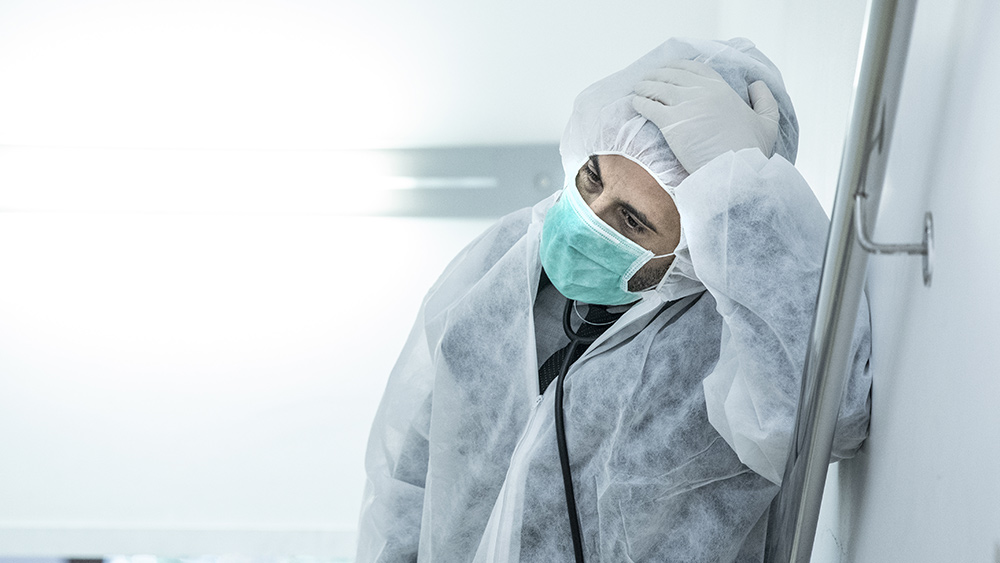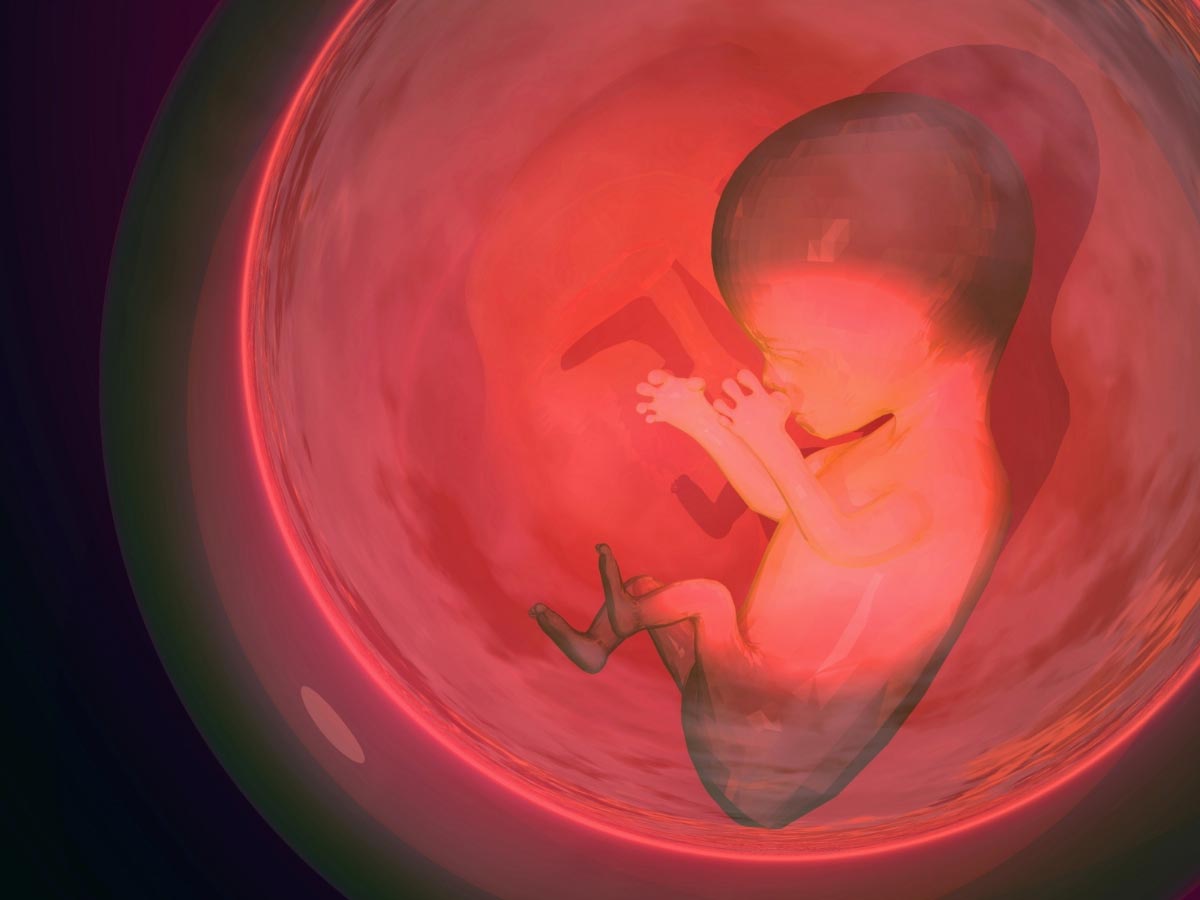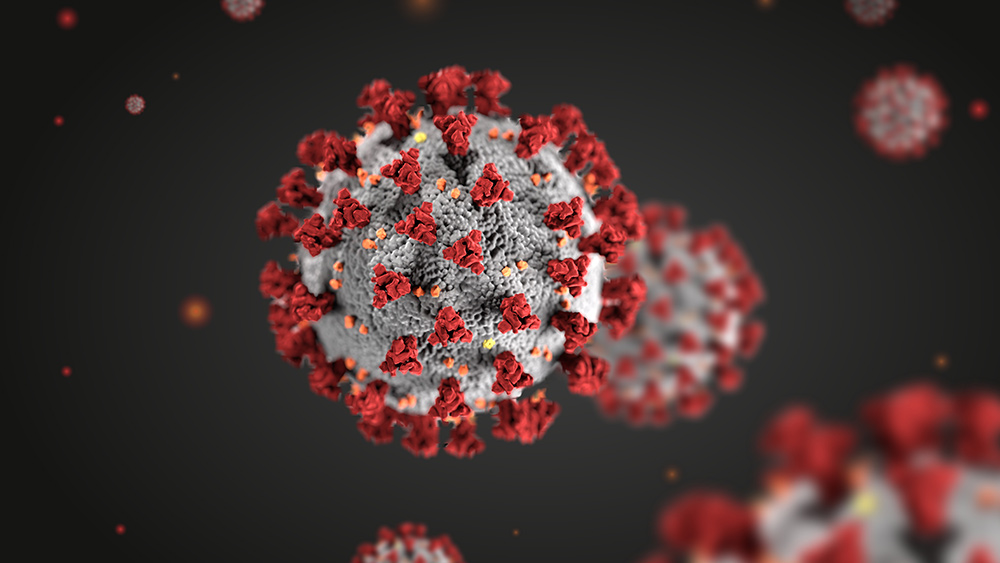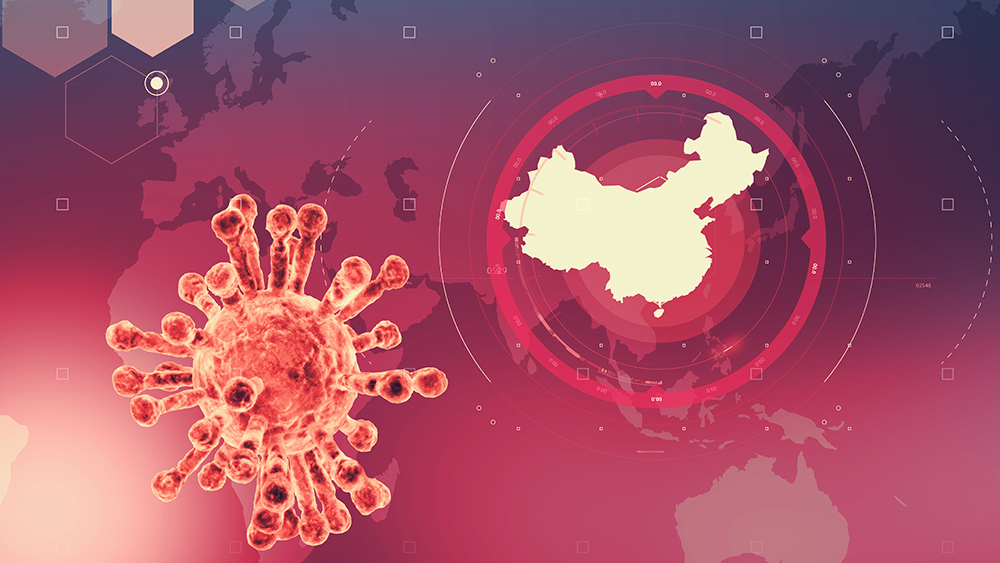Did Anthony Fauci’s promotion of dangerous research help create the COVID-19 pandemic?
06/20/2020 / By News Editors
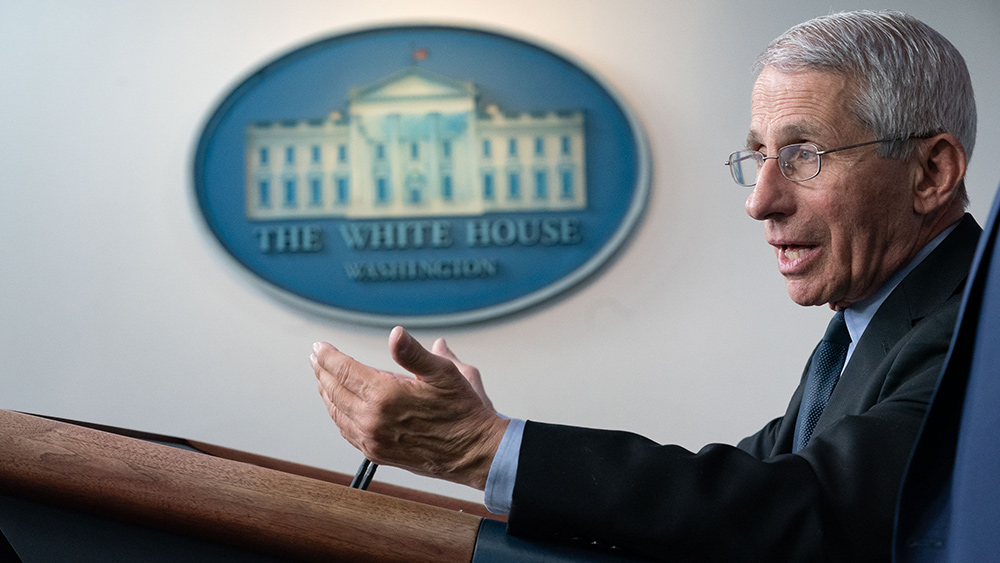
As journalists and government agencies continue to investigate the origins of the COVID-19 pandemic, it appears increasingly likely that the novel coronavirus was unleashed, inadvertently or not, by a Chinese virology lab in Wuhan, where dangerous “gain of function” research was being done on bat coronaviruses of the COVID-19 variety.
(Article by Matthew Cullinan Hoffman republished from LifeSiteNews.com)
However, the potential scandal is magnified by the fact that the Chinese were not conducting these dangerous experiments on their own; much of the research at the Wuhan Institute of Virology labs was being advocated, defended, and funded by the leadership of the United States National Institutes of Health and the United States Agency for International Development, in coordination with the World Health Organization and various U.S. universities and institutes.
If it is ultimately proven true that the Wuhan Institute of Virology unleashed the novel coronavirus upon the world, then not only China, but the United States and the global health establishment as well will be implicated in the worst socioeconomic and political crisis of the 21st century, a pandemic that has now taken the lives of over 400,000 people and has wreaked havoc on the global economy.
The circumstantial case against the laboratories operated by the Wuhan Institute of Virology is strong, even if it is not definitive. The researchers at the WIV specialized in bat coronaviruses that are most closely related to the novel coronavirus that causes COVID-19, and they admit that they sampled at least one such virus that was identical in 96% of its genome. This relative of the novel coronavirus, RaTG13, is the closest one known to scientists, with the second being a Pangolin coronavirus that is only 91% the same.
Moreover, the theory initially embraced by the Chinese government, that the pandemic arose from the handling of wild animals at a market in Wuhan, has been so thoroughly debunked that it now has been officially discarded by Chinese authorities themselves. This theory was the most viable alternative to the lab origin theory of COVID-19.
Now a new study by Australian researchers has highlighted evidence that the virus developed in human cells, possibly in a laboratory cell culture, before being unleashed upon the world. Confronted with the Australian study, Dr. Francis Collins, Director of the National Institutes of Health, seems to have backtracked in his narrative about the novel coronavirus. In the past he has trumpeted a study that concluded the virus was of natural origin, and is now stating that he cannot rule out the possibility that, whatever its origin, it escaped from a laboratory.
Even the former head of Britain’s foreign intelligence service MI6 believes that the evidence favors the lab origin theory. Sir Richard Dearlove recently told Britain’s Telegraph newspaper that “I do think that this started as an accident,” in a Chinese lab, although he holds that more research is necessary to confirm or discard the theory. “It raises the issue, if China ever were to admit responsibility, does it pay reparations? I think it will make every country in the world rethink how it treats its relationship with China and how the international community behaves towards the Chinese leadership,” Dearlove told The Telegraph’s podcast program Planet Normal.
After exhaustively reviewing the evidence in favor of the Wuhan lab theory, two eminent virologists, Jonathan R. Latham and Allison Wilson, concluded recently that “a lab escape is by far the leading hypothesis to explain the origins of Sars-CoV-2 and the COVID-19 pandemic.” The Bulletin of Atomic Scientists approvingly cites Lathamm and Wilson’s article, and states that the lab origin theory is a “plausible, if unproven, possibility.” They add that “it is most definitely not ‘a conspiracy theory’”
The disturbing possibility that a Wuhan virology lab is the source of the outbreak would not only inculpate Chinese researchers, but the global health establishment itself, which cooperated in the research through a collaboration between U.S. health agencies, the communist Chinese government, and the United Nations. The moral leadership in this international research effort was, indisputably, the U.S. National Institutes of Health, led by Dr. Francis Collins and Dr. Anthony Fauci, whose names are now famous for their leadership in the coronavirus pandemic as well.
Adding to the potential scandal is the futile motive for such dangerous research: an obsessive drive for vaccines and anti-viral treatments to address mass outbreaks of disease, an approach that has been largely discredited over more than 60 years of experience. While vaccines have had relatively little effect on new pandemic forms of influenza, scientists have repeatedly warned against the increasingly hazardous research on viruses that could unleash plagues of the very type they are meant to address.
In the meantime, the United States and most of the nations of the world have remained woefully unprepared for pandemic disease outbreaks. In the U.S., Fauci, Collins, and other top health officials found themselves unable to prevent an epidemic that they had supposedly spent decades preparing for, dithering and bickering for six weeks over developing a test for the novel coronavirus while the disease spread undetected through the American population. In other countries, such as Korea, Singapore, and Taiwan, testing and contact tracing on inbound travelers and their contacts was deployed immediately, saving their people and economies from devastating “lockdowns.”
Following their bungling of the crisis, Fauci and other health leaders essentially dictated the imprisonment of millions of people in their homes and the shutdown of the global economy, in imitation of Communist China, a country with which they have collaborated for decades despite its dismal record of lies and cover-ups regarding disease outbreaks. Until recently, they were encouraging states to continue in a state of confinement and enforced “distancing” until a vaccine can be produced, a project that could take years. They have also issued a stream of questionable and often contradictory guidelines that may have aggravated the COVID-19 death toll rather than suppressing it.
How did this happen? How was the world thrown into chaos by the poor decisions of a small elite of health officials and global bureaucrats? The story may well begin with Anthony Fauci’s obsession with vaccines and antiviral treatments, rather than testing and confinement of disease outbreaks. The desire for treatment over prevention led Fauci and Collins to endorse controversial and dangerous “gain of function” research on viruses, which was, in effect, outsourced to China while it was prohibited in the U.S.A.
Dangerous “gain of function” studies on animal viruses promoted by Fauci and Collins
Anthony Fauci and Francis Collins have been publicly promoting and defending dangerous “gain of function” studies on viruses since the first experiments of the kind were announced in 2011. Such studies, which seek to make viruses infectious in new species of mammals and even humans, were being done in the Wuhan Institute of Virology, the suspected source of the COVID-19 outbreak that is now sweeping the world – and they were being done in part with funding from the National Institutes of Health, as well as the U.S. Agency for International Development.
Fauci has long held that the principal way to respond to epidemics of disease is to produce vaccines and other treatments for the disease. This has led him to push for controversial virus research universally recognized as highly dangerous, even more so than earlier research that has resulted in past outbreaks and even pandemics.
“Gain of Function” research seeks to take animal viruses from bats, birds, and other non-human virus carriers, and to genetically modify them to alter their mode of functioning, enabling them to become infectious in other animal species, even in humans. Medical researchers have repeatedly expressed alarm regarding such experiments, arguing that they could inadvertently cause new pandemics.
This new field of experimentation was begun in the late 2000s by Ron Fouchier, a researcher at Erasmus University in Holland, in response to outbreaks of another virus, an “avian flu virus” of the H5N1 variety that could infect people but could not be transmitted from person to person. Fouchier wanted to know if a mutation could enable the H5N1 virus to become transmissible in mammals, so he modified it and attempted to pass it through a Ferret population. He succeeded and announced his results in 2011, and published them in Science in 2012. Another scientist, Yoshihiro Kawaoka of the University of Wisconsin–Madison, published similar results the same year in Nature after infecting ferrets with a hybrid virus created in his lab.
The publication of both studies generated alarm and met with serious resistance. Before their publication the US National Science Advisory Board for Biosecurity (NSABB) urged that certain details be removed from the published version of the studies because of the danger they could be used for bioterrorism. However, their advice was ultimately rejected and the papers were published in full.
In reaction to the controversy, Dr. Fauci and his superior, Dr. Collins, came to the defense of the controversial new research in December of 2011, in an opinion piece published by the Washington Post, in which they admitted that the studies had been funded in part by the National Institutes of Health. In the piece, the two gave an impassioned defense of Gain of Function studies. The statement’s title was frank, and to the point: “A flu virus risk worth taking.”
“Important information and insights can come from generating a potentially dangerous virus in the laboratory,” the two wrote, along with Gary Nabel, NIAID’s Vaccine Research Center director.
However, they assured the public that “high-security” measures would protect them from the danger of outbreaks. “The engineered viruses developed in the ferret experiments are maintained in high-security laboratories,” they wrote. “The scientists, journal editors and funding agencies involved are working together to ensure that access to specific information that could be used to create dangerous pathogens is limited to those with an established and legitimate need to know.”
Following the publication of the articles, eminent scientists such as Marc Lipsitch, an epidemiology professor at the Harvard School of Public Health, repeatedly sounded the alarm against the research. In 2014 he organized a large coalition of eminent virology researchers, called the Cambridge Working Group, which published a “Statement on the Creation of Potential Pandemic Pathogens” expressing their concern that a pandemic could be unleashed from a virology lab, especially given the large number of security breaches that had recently occurred.
“Recent incidents involving smallpox, anthrax and bird flu in some of the top US laboratories remind us of the fallibility of even the most secure laboratories, reinforcing the urgent need for a thorough reassessment of biosafety,” the group declared. “Such incidents have been accelerating and have been occurring on average over twice a week with regulated pathogens in academic and government labs across the country.”
Regarding the controversial Gain of Function studies, the group noted that, “accident risks with newly created ‘potential pandemic pathogens’ raise grave new concerns. Laboratory creation of highly transmissible, novel strains of dangerous viruses, especially but not limited to influenza, poses substantially increased risks. An accidental infection in such a setting could trigger outbreaks that would be difficult or impossible to control. Historically, new strains of influenza, once they establish transmission in the human population, have infected a quarter or more of the world’s population within two years.”
Lipsitch and the Cambridge Working Group’s efforts seemed to meet success: in the same year, 2014, the National Institutes of Health defunded such research and launched a massive reform of procedures after the discovery of long-discarded, uncontrolled vials of deadly pathogens at a Food and Drug Administration lab on its campus that revealed systematic failures of lab security in the U.S.
However, advocates of gain of function research ultimately prevailed when the U.S. Department of Health and Human Services began to allow funding for such experiments in 2018 – a decision that was publicly applauded by Anthony Fauci, whose NIAID began paying for the research at a U.S. facility. The approval, which appears in the document “Guiding Funding Decisions about Proposed Research Involving Enhanced Potential Pandemic Pathogens” explicitly allowed for the creation of viruses that could cause a pandemic, that is, a “potential pandemic pathogen” (PPP), even one whose potency has been enhanced artificially, if certain criteria are met.
However, in the interim, the National Institutes of Health already had begun funding coronavirus research at another organization outside of the United States: the Wuhan Institute of Virology in Wuhan, China. The institute, which had been receiving money from the U.S. Agency for International Development for years, would now receive part of a $3.7 million grant from the NIH funneled through another organization, the “EcoHealth Alliance.”
Enter the Wuhan Institute of Virology
The origins of the Wuhan Institute of Virology (WIV) go back to 1956, when the Chinese Academy of Sciences founded it as the “Wuhan Microbiology Laboratory.” After several name changes, it received its current name in 1977. Its main purpose was the study of disease for the purpose of improving agriculture, and was known for having created a highly-effective insecticide for killing insects using insect viruses.
However, in 2002 a new disease broke out in China: Severe Acute Respiratory Syndrome (SARS), which has been called “the most severe socio-political crisis for the Chinese leadership since the 1989 Tiananmen crackdown.” A total of 8,098 people were infected in 29 countries, and 774 died. It was caused, like COVID-19, by a coronavirus, and like COVID-19, the SARS outbreak was initially covered up by the Chinese government, allowing it to spread to a large number of foreign countries. In response to the crisis, the WIV’s scope of investigation was expanded for the purpose of researching viral disease in humans.
Given that SARS coronavirus was believed to have originated in bats, researchers at the WIV began to collect and study such viruses from various bat caves in China. They would enter the caves, capture bats, take blood and saliva samples, swab their anuses, and obtain fecal matter and urine that might contain SARS-like coronaviruses.
The research was dangerous from the beginning. Simply collecting and studying coronaviruses can cause new outbreaks if security protocols are not followed to the letter, and this is precisely what happened in a Chinese lab in 2004, where two different outbreaks of SARS were caused by security breaches. The outbreaks occurred despite the fact that the security protocols were rated as an “acceptable” biosafety level three, but it appears that the rules were not really obeyed at the Beijing facility. Nine individuals were infected, and one died – and again, the Chinese government waited weeks to inform the public. Other, smaller outbreaks were also reportedly caused by labs in Taiwan and Singapore in 2003.
The leading expert at the WIV on bat coronaviruses was Shi Zhengli, an eminent researcher who became known internationally as the “bat lady.” During the 2000s, Shi led an international team of researchers to sample viruses from thousands of horseshoe bats throughout China, and published their initial findings with the U.S. Centers for Disease Control in 2007. They finally found bats living in caves in the province of Yunnan in the southeast of China that were infected with human-like coronaviruses, and spent five years swabbing their rear ends and collecting their feces. By the early 2010s, the WIV’s research was receiving funding from the United States Agency for International Development (USAID) as part of its now-defunct “PREDICT” program.
By 2013 the researchers had found a SARS-like coronavirus in the Yunnan caves, and by 2017, they had demonstrated that all of the genetic material to make the original SARS virus was present in those coronaviruses,, and that it was possible to spawn such a virus through the process of genetic exchange. However, the theory that the bats of the Yunnan caves were the source of the original SARS outbreak was a weak one at best, given that the caves were thousands of miles away from the original place of the outbreak, Guangdong province, and local residents had never shown signs of SARS. Nonetheless, it was hailed as a great breakthrough by fellow researchers.
Gain of function research of the kind defended by Fauci and Collins was also going on at the WIV lab. As early as 2015 the lab did an experiment in which it combined a part of the original SARS virus, the “spike protein” that enabled it to penetrate human cells, and placed it in a “wild” bat coronavirus to create a hybrid or “chimera” pathogen that was able to infect human cells as well as the lungs of mice in a way similar to the SARS virus that caused the 2002 outbreak.
“The results indicate [that the chimeric viruses] . . . replicate efficiently in primary human airway cells and achieve in vitro titers equivalent to epidemic strains of SARS-CoV,” wrote Shi Zhengli and her colleagues in their article for Nature. “Additionally, in vivo experiments demonstrate replication of the chimeric virus in mouse lung with notable pathogenesis.”
Alarmingly, the researchers also found that their new chimera virus could not be stopped by human antibodies nor the equivalent of a vaccine. “Evaluation of available SARS-based immune-therapeutic and prophylactic modalities revealed poor efficacy; both monoclonal antibody and vaccine approaches failed to neutralize and protect from infection with CoVs using the novel spike protein,” they wrote.
The results were met with expressions of grave concern by scientists critical of gain of function studies. Simon Wain-Hobson, a virus researcher at the Pasteur Institute in Paris, told Nature magazine that he disapproved of the research, pointing out that the WIV had created a new virus hybrid that “grows remarkably well” in human cells. “If the virus escaped, nobody could predict the trajectory,” he told the publication.
Molecular biologist Richard Ebright concurred, and dismissed the usefulness of the research to human medicine. “The only impact of this work is the creation, in a lab, of a new, non-natural risk,” he told Nature.
Despite the riskiness of the research and despite its own moratorium on funding experiments of this kind in the USA, in 2014 the U.S. National Institutes of Health began giving a total of $600,000 to the WIV through an intermediary organization called the “EcoHealth Alliance,” as part of a $3.4 million grant for coronavirus research, most of which went to Chinese organizations (some sources, however, report that the total grant was $3.7 million). According to Politico, the NIH was joined in its funding of the WIV by several U.S. universities and the National Wildlife Federation. The WIV was also included in a network of labs recognized by the World Health Organization, and it was upgraded to a biosafety level lab (BSL-4), the highest security rating available, in 2015, the year of the chimera experiment.
The funds coming from the National Institutes of Health were therefore going to an institute that was conducting the very kinds of research that the NIH had temporarily defunded in the United States due to security concerns.. The dangerous research, in effect, had been outsourced to China, a country with comparatively little experience in sophisticated virus research and a long track record of safety breaches.
The journal Nature reported again in 2017 on the controversial research that was being done by the WIV, noting that “some scientists outside China worry about pathogens escaping, and the addition of a biological dimension to geopolitical tensions between China and other nations.” However, added Nature, “Chinese microbiologists are celebrating their entrance to the elite cadre empowered to wrestle with the world’s greatest biological threats.”
The Nature article also noted that the concerns about the lab were in part based on the fact that “the SARS virus has escaped from high-level containment facilities in Beijing multiple times” in the early 2000s.”
A second phase of funding by the National Institutes of Health for viral research by the WIV was approved in 2019. However, in the wake of the COVID-19 pandemic, and under pressure from President Trump and others in his administration, the NIH has now canceled all funding to the WIV, to the consternation of gain of function research proponents. The NIH claims that the second phase of funding was not intended to support gain of function research at WIV laboratories.
Sinister behavior by Wuhan lab concern French and Canadian collaborators
In the wake of the SARS pandemic in 2004, the French government had agreed to help China build a BSL-4 laboratory for studying viruses, a lab that would permit the Chinese to carry out the most dangerous sort of viral research.
According to Chinese officials, the main purpose of the lab would be to develop treatments for disease. “The Wuhan lab will give his group a chance to study how such viruses cause disease, and to develop treatments based on antibodies and small molecules,” said Nature paraphrasing George Gao, director of the Chinese Academy of Sciences Key Laboratory of Pathogenic Microbiology and Immunology in Beijing. However, according to some reports, from the beginning some French officials were wary about the project, concerned that the Chinese government would not give them clear information about what had happened to BSL-3 laboratories that France had helped China construct for the SARS pandemic in 2004.
Nonetheless, construction of the new facility finally began in Wuhan in 2010 under the auspices of the Wuhan Institute of Virology. The French oversaw the construction, with input from the billionaire bioindustrialist Alain Merieux, although Chinese companies did most of the work. The building was completed in 2015 and began a testing phase, but already a major problem regarding lab security had arisen: due to the questionable competence of the Chinese construction companies, the French organization charged with certifying the lab, Technip, refused to do so.
In 2016, the WIV lab provoked concern among French national security officials when they made a request for more BSL-4 anti-viral suits than they needed, raising suspicions that the extra suits would be diverted to viral research labs run by the military, presumably for biowarfare research. Their request was denied by the French.
“The order was much higher than the real needs of the Wuhan lab,” an anonymous diplomat knowledgeable about the case told the French publication Challanges, explaining that the excess suits might have been destined for research purposes at a military laboratory. “China has long been suspected of having such a place in the north of the country, but we don’t have enough evidence,” he told the publication.
Moreover, relations began to break down between French health officials and the lab. In 2015, Alain Merieux resigned from the co-chairmanship of the French-Chinese joint committee overseeing the operation, calling the lab a “very Chinese tool,” and adding, “It belongs to them, even if it was developed with technical assistance from France.” In the following year, the committee ceased to have meetings altogether, according to Merieux. In 2017, the French health minister Marisol Touraine announced a collaboration in which 50 French researchers would work at the new lab for five years, but it never came to pass. It appears that the Chinese government was no longer sharing information with their former French helpers.
Further concern was raised about the WIV when a Chinese researcher affiliated with the Wuhan lab, Dr. Xiangguo Qiu, as well as her husband Keding Cheng and a number of Xianuggo’s students from China were escorted out of Canada’s National Microbiology Laboratory (NBL) on July 5, 2019, and their security access to the lab was revoked.
The actions were taken as a result of an investigation launched by the Royal Canadian Mounted Police at the behest of officials at the NBL. Canadian media reported that in the process, Xianuggo’s computer had been confiscated and her requests to travel to China had begun to be denied. Later, the couple were also removed from their teaching positions at the University of Manitoba. Police told reporters that they were investigating a “policy breach” at the facility, but would not speak further about the matter.
Subsequent reports in the Canadian press indicated that three months earlier, unnamed scientists at the lab had sent live samples of the highly dangerous Ebola and Henipah viruses to Beijing on an Air Canada flight. Anonymous sources told the Canadian Broadcasting Company that the viruses “may have been shipped to the Chinese Academy of Sciences in a way that circumvented the lab’s operating procedures, and without a document protecting Canada’s intellectual property rights,” in the words of the CBC. The Public Health Agency of Canada refused to tell the CBC whether or not the shipment had to do with the removal of the two scientists, but claimed that “all protocols were followed” in the shipments.
In October of 2019, the CBC reported that Xiangguo Qiu had made five different trips to the Wuhan Institute of Virology BSL-4 lab during 2017-18, in one case for training the WIV researchers. Personnel at the Canadian lab had found the trips to be troubling and suspicious.
According to the CBC article, “there have always been questions about Qiu’s trips to China — and what information and technology she was sharing with researchers there.” An employee of the Canadian lab told the CBC, ”It’s not right that she’s a Canadian government employee providing details of top-secret work and know-how to set up a high-containment lab for a foreign nation.”
Finally, on January 26th of this year, the lab’s affiliation with the Chinese military was confirmed when leadership of the operation was given to a major general in China’s People’s Liberation Army, Chen Wei, who leads the Institute of Bioengineering at the Academy of Military Medical Sciences.
Australia’s Daily Telegraph has also revealed recently that a member of the board of the Wuhan Institute of Virology, Professor Wu-Chun Cao, is the director of the State Key Laboratory of Pathogen and Biosecurity, which is a part of the Academy of Military Medical Sciences. He holds the rank of colonel in the People’s Liberation Army.
The government’s portrayal of Chen as a heroic fighter against disease has been naively echoed by American mainstream media sources such as Anna Fifield of the Washington Post. However, experts who study the proliferation of weapons of mass destruction say that Chen’s Institute of Bioengineering is involved in what the Chinese government calls “bio-defense,” that is, the use of disease agents in warfare – purportedly for defensive purposes.
American diplomats sound alarm about safety at new WIV lab
Despite the touted security precautions taken at the lab, by early 2018 American diplomats in Wuhan were beginning to express grave concerns about the level of safety at the WIV’s new BSL-4 lab, which was in a pre-opening testing phase. Following a visit by a diplomatic delegation to the lab in January, embassy officials sent two cables to Washington expressing their concerns about the findings. The text of one of the two cables was recently leaked to the Washington Post.
“During interactions with scientists at the WIV laboratory, they noted the new lab has a serious shortage of appropriately trained technicians and investigators needed to safely operate this high-containment laboratory,” one of the cables stated, according to the Post.
“The cable was a warning shot,” an unnamed U.S. official told the newspaper. “They were begging people to pay attention to what was going on.”
Strong circumstantial evidence of lab origin first recognized by Chinese researchers
The theory that a lab accident in Wuhan might be the cause of the novel coronavirus outbreak has become increasingly supported by circumstantial evidence. The theory was first brought to the attention of the public by two Chinese scientists, Botao Xiao and Lei Xiao of the South China University of Technology, who published a pre-print of their article in February of this year on ResearchGate before it disappeared without explanation (a web archive version can still be found here).
The pair point out that the two most likely sources of the novel coronavirus in Wuhan are two laboratories that were collecting and conducting experiments on bat coronaviruses at the time of the outbreak, not Wuhan’s Huanan Seafood Market, which is the source originally named by the Chinese government.
The two scientists note that, although a high percentage of people who had COVID-19 symptoms in Wuhan had visited the Huanan Seafood Market, and a large number of positives were found in samples collected in the market after the outbreak, the market itself was not selling bats, and was more than 1000 miles away from the bat caves where such SARS-like coronaviruses are known to exist. However, the two labs studying the same virus were very close to the seafood market.
The closest of the two labs to the Huanan Seafood Market was the Wuhan Center for Disease Control and Prevention (WHCDC), which was about 280 meters away. According to the two scientists, the center was doing collection of pathogens from bats and other animals.
The “WHCDC hosted animals in laboratories for research purpose [sic], one of which was specialized in pathogens collection and identification,” the authors write. “In one of their studies, 155 bats including Rhinolophus affinis were captured in Hubei province, and other 450 bats were captured in Zhejiang province.” They also note that the lab’s collection expert had had to quarantine himself after bats bled and urinated on him, and that the first doctors infected by the novel coronavirus were working in the Union Hospital adjacent to the WHCDC.
However, the authors note, a Wuhan Institute of Virology lab was also fairly close, only 7.5 miles away from the seafood market. Moreover, it was the Wuhan Institute of Virology that was doing research on the very kind of bat coronaviruses that cause COVID-19, which included research involving the creation of virus hybrids that could infect humans. The authors also note that concerns had been raised about the dangers of unleashing a pandemic from the lab.
The Huanan Seafood Market theory is further discredited by a study published in January by the Lancet, which notes that the earliest known case of COVID-19, which arose on December 1 of 2019, had no known link to the market. Recently the Chinese government abandoned the seafood market origin theory altogether, but is now claiming that the pandemic began outside of Wuhan.
Read more at: LifeSiteNews.com
Tagged Under: biological weapons, bioweapons, CCP, CDC, coronavirus, covid-19, Fauci, FDA, health, infections, outbreak, pandemic, propaganda, Wuhan coronavirus



